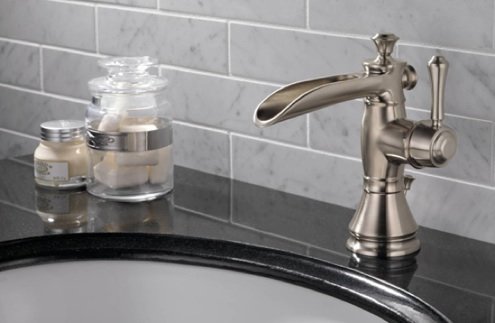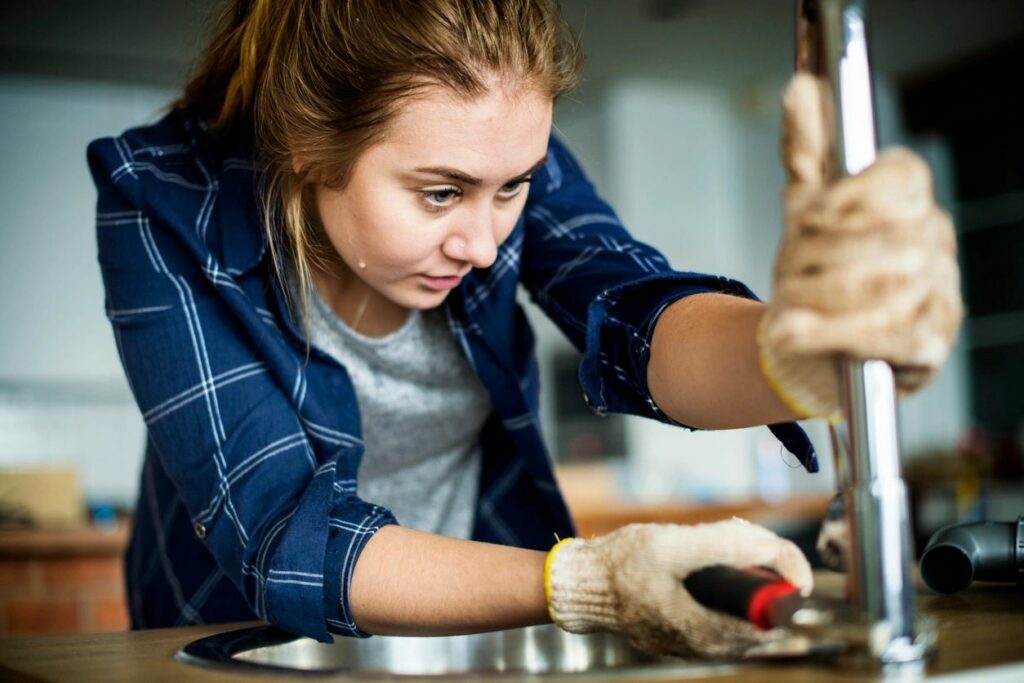We have found this great article pertaining to How to Fix a Dripping or Leaky Faucet below on the web and thought it made good sense to discuss it with you on this page.

Dripping faucets might look like a small hassle, but their impact surpasses just the inconvenience of the sound. From wasting water to incurring unnecessary monetary costs and health and wellness threats, ignoring a trickling faucet can bring about numerous repercussions. In this write-up, we'll look into why it's essential to resolve this common home concern without delay and successfully.
Wastage of Water
Environmental Impact
Dripping taps contribute considerably to water waste. According to the Epa (EPA), a solitary tap dripping at one drip per secondly can waste more than 3,000 gallons of water per year. This not just pressures water resources yet likewise influences ecosystems and wildlife depending on them.
Financial Prices
Enhanced Water Expenses
Past the ecological influence, leaking taps can pump up water expenses substantially. The collected wastefulness in time equates right into greater energy expenditures, which can have been prevented with prompt repairs.
Prospective Residential Or Commercial Property Damage
Additionally, long term dripping can cause damage to fixtures and surface areas surrounding the tap. Water buildup can trigger staining, deterioration, and also structural concerns if left ignored, leading to additional fixing costs.
Health and wellness Concerns
Mold and Mold Development
The continuous existence of wetness from a leaking faucet produces an excellent setting for mold and mildew and mold growth. These fungi not only compromise indoor air quality but additionally pose health risks, specifically for individuals with respiratory conditions or allergies.
Waterborne Illness
Stationary water in leaking faucets can end up being a breeding ground for bacteria and other microorganisms, boosting the risk of waterborne diseases. Contaminants such as Legionella bacteria prosper in stagnant water, potentially leading to severe diseases when ingested or breathed in.
DIY vs. Expert Repair work
Advantages and disadvantages of Do It Yourself Repair Work
While some may try to fix a trickling faucet themselves, DIY repair services come with their very own set of challenges. Without correct knowledge and devices, DIY attempts can intensify the concern or result in incomplete fixings, lengthening the trouble.
Advantages of Hiring an Expert Plumber
Hiring an expert plumber makes sure that the underlying source of the leaking tap is resolved successfully. Plumbing professionals have the experience and tools to diagnose and fix tap problems efficiently, saving time and reducing the risk of more damages.
Step-by-Step Guide to Taking Care Of a Dripping Tap
Tools Required
Prior to attempting to fix a dripping tap, collect the needed tools, including a flexible wrench, screwdrivers, substitute components (such as washers or cartridges), and plumber's tape.
Typical Faucet Issues and Their Solutions
Identify the sort of tap and the specific issue causing the drip. Common troubles include damaged washing machines, rusty shutoff seats, or malfunctioning O-rings. Refer to producer instructions or on the internet tutorials for detailed assistance on repairs.
Preventive Measures
Normal Maintenance Tips
To stop leaking taps, perform regular upkeep such as cleansing aerators, examining for leakages, and replacing worn-out components immediately. Furthermore, think about mounting water-saving gadgets or updating to much more efficient fixtures.
Value of Prompt Repair Works
Addressing leaking taps as quickly as they're observed protects against additional water waste and prospective damages, ultimately conserving both water and money in the future.
Impact on Residential Property Value
Perception of Well-Maintained Property
Maintaining a residential property in good condition, including dealing with maintenance issues like trickling faucets, enhances its regarded worth and desirability amongst prospective buyers or renters.
Impact on Resale Worth
Characteristics with properly maintained plumbing fixtures, consisting of faucets, command higher resale values in the realty market. Dealing with dripping taps can contribute to a favorable impression during residential or commercial property examinations and negotiations.
Environmental Obligation
Private Contribution to Preservation
Taking duty for fixing trickling taps aligns with wider efforts toward water preservation and environmental sustainability. Every individual's activities jointly make a substantial effect on preserving precious sources.
Lasting Living Practices
By focusing on prompt repairs and taking on water-saving behaviors, people contribute to sustainable living techniques that profit both existing and future generations.
Verdict
Attending to a trickling faucet surpasses mere convenience; it's a necessary step towards preserving water, decreasing economic prices, and protecting wellness and property. Whether via DIY fixings or expert assistance, doing something about it to take care of leaking taps is a little yet impactful way to promote accountable stewardship of resources and add to a much healthier, a lot more lasting future.
Why Are My Faucets Dripping (And Can I Fix it Myself)?
Causes of a Dripping or Leaking Faucet
Whether you’re hearing drops of water falling and hitting a sink, or noticing water ooze out from the base of the spout, you shouldn’t ignore a dripping or leaking faucet. And, the good news is, sometimes you can fix the problem yourself.
In this article, we’ll review a few common causes of dripping and leaky. We’ll also walk you through some basic ways to find the problem and handle it without calling anyone — and let you know when to call in a pro.
But, no matter what the cause, or whether you can handle it on your own, the sooner you address it, the better.
Each drip may be a tiny amount of water. But, they all add up quickly. According to the U.S. Geological Survey, one faucet losing one drop every 20 seconds — five a minute — wastes around a liter of water every day, and 173 gallons a year.
Add in more than one in your house, and it’s a lot of water to waste. So, we’ll help you get to the bottom of things quickly.
Four Reasons Your Faucet May Be Dripping
Aerator is Damaged or Unseated Valve Seat is Corroded O Ring is Loose or Worn Out Part of the Assembly is Loose Aerator is Damaged or Unseated
If you unscrew the end of your faucet, you’ll find the aerator. It’s the little stem piece with a screen on it that shuts off the water circulation.
If it’s damaged, or if it’s not sitting right, it will allow water to pass through.
Valve Seat is Corroded
Next is the valve seat, which is connected to the washer. If the washer wasn’t in place correctly, then it could have ground against the seat. Over time, this damages the valve seat.
The problem could also be corrosion: Over time, the part has worn out, and it’s now allowing water to pass through.
O Ring is Loose or Worn Out
Since the o ring is only a small rubber gasket, it’s a common reason why the faucet is dripping. You’ll find it at the base of the faucet, and it’s there to keep water from coming out where it’s not supposed to.
However, it’s common for the o ring to wear out over time. When it does, you’ll notice a drip.
Part of the Assembly is Loose
So far, we’ve looked at a few small, specific parts. But, the problem could be anywhere in the assembly if something’s out of place.
Even if a part isn’t damaged, over time, it may have become loose or dislodged. It could be the parts we mentioned, or the aerator at the tip of the faucet, the stem itself,
Can I Fix a Leaky Faucet Myself?
Depending on the problem, and how handy you are, there’s a chance you can fix a leaky faucet without calling a professional. But, you do run the risk of making the problem worse.
If it’s a small drip, you can certainly try a few troubleshooting tactics. We’ll walk you through them in a moment.
But, no matter what, your first step should be shutting off the water coming into the faucet. You should find a shutoff valve under the sink on the pipes leading to it. Turn each one clockwise until they close tightly.
Next, make sure you have the right tools for whatever you’re attempting. It’s tempting to make do with what you have. But, you need the right ones for a reason: You’re often dealing with small parts that can break if you handle them carelessly.
If you’re feeling confident, here are some places to start.
Items Near the Tip of the Faucet
A few of the parts we mentioned — particularly the valve seat and washer — are located at the tip of the faucet where the water comes out. They’re easy to access, making it a good place to start.
Check the O Ring
To check the o ring, you’ll need to take off the spout at the base. It’s easiest on kitchen sinks with long spouts, versus the smaller, bulkier base on most bathroom sinks.
Either way, this can be tricky, so do it carefully and don’t force anything. If it’s not coming right off, you’re much better off calling in a pro than possibly breaking something.
For a kitchen sink, there’s usually a nut or coupling assembly at the base of the spout. These often slide off easily without using any tools.
Once you’ve disassembled those parts, gently but forcefully twist off the spout.
Then, you can see the o rings. There should be two of the rubber gaskets on the base. If they look worn or damaged, replace them, and see if that solves the problem.

Do you like reading up on Water Dripping from Faucet: Why and How to Fix? Write a review directly below. We would be pleased to see your thoughts about this blog. In hopes that you visit us again soon. For those who enjoyed our blog entry plz remember to share it. Many thanks for your time invested reading it.